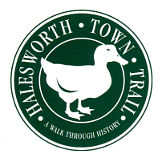

Halesworth Time Line:
A Walk Through History
1860 – 1900AD

1862 the Rifle Hall is presented to the town by the family of a late captain of the rifle corps Andrew Johnston. It is so called because it was used as a drill hall by the rifle corps. The hall was originally built in 1792 as a theatre and was used from 1812 – 1844 by the theatre manager David Fisher. He owned an itinerant theatre group which travelled a circuit of theatres in East Anglia (including the Fisher Theatre in Bungay currently under restoration). It would take the company two years to complete the circuit travelling with their costumes, props and sets and publicising their plays as they went. They were highly successful with strong links with the London stage and the acting circle.

1862 During a struggle following a burglary PC Ebenezer Tye is clubbed over the head with a cudgel by John Ducker of Chediston Street. PC Tye is left in the river and dies either from drowning or from his wounds. He is buried in the local cemetery in a spot known as 'Policeman's Grave'.
1863 John Ducker, murderer of PC Tye, is the last person in Suffolk to be hanged in public for his crimes.

1854 the railway arrives in Halesworth.
1859 the station moves to its present position as the line is extended to Lowestoft.
1879 – 1929 the Southwold to Halesworth Railway operates. There are now plans to restore parts of this narrow gauge line and it has an active society - Southwold Railway Trust.
1888 the moveable platform is installed (renewed in 1922 and restored in 1999) This ingenious device is one of only a handful in the UK. As trains became longer they needed longer platforms. This device allowed the platforms to be extended across the adjacent level crossing. The moveable platform sections could be swung to one side to open the road for traffic.
